Wet Felting for Beginners
Did you know you can create your own woolen fabric using your bare hands? No spinning, weaving or knitting necessary! The method of doing this is called Wet Felting and is a very ancient process, originating thousands of years ago among nomadic tribes of Eurasia. The process uses hot water, soap and friction to open up the microscopic textures on the wool fibres to open and hook onto each other, tangle up and form a dense, secure, non-woven fabric that we know as felt!

Ready to learn this ancient method and create your own piece of felt, with just a few materials right from the comfort of your own home? Let’s get started!
Note: This tutorial was done using 3 different types of carded wool. The 3 types will be shown in photos and videos, however, at times just one type will be shown to demonstrate the outlined step.
Materials
- Carded Felting Wool
- Hot water
- Soap - clear or white
- Textured plastic sheet
- Screen mesh
- Sponge
- Towel or rag
- 2 containers for soap and water
- Ruler (Optional)
- Plastic tablecloth (Optional)
*If you plan on following along using one of our Carded Felting Wool's mentioned above (ONLY available in Canada), we recommend our F-11 100% Wool for the best Wet Felting experience.
Set Up
1. Prep your table by laying down a plastic tablecloth or work outside - wet felting can get messy! Then lay the textured plastic sheet across the table.
2. Gather your materials and have them all to one side on the table within arm’s reach, especially the sponge and towel.

Lay Out The Wool
3. Pull wisps from the bundle of wool, trying to keep a consistent shape, size and density. This is so that you will have a more consistent thickness throughout your final felt piece.



4. Use a ruler to help guide how big you make the piece. Remember that felting will shrink the wool. A good rule of thumb is to start out 1” bigger than what size you want to end up with. Or ditch the ruler if you are just having fun!



5. Lay out the wisps all going vertically and overlap the ends by ½”. Lay out the second layer going horizontally. Repeat until you have 4-6 layers, depending on how thick you want your felt.

One layer of wool wisps on the left side, two layers on the right side
DID YOU KNOW? The layout of your layers of wisps can also be multi-directional; this will still result in the fibers felting together. However, crisscross is a more common method because you can see the build-up of layers more easily (as seen in the photo above).
6. Put a few squirts of soap into your first container and add a small amount of hot water.
TIP! If using dish soap, be sure to use a soap free of colored dyes as they can transfer to white wool. Olive oil soap works best for felting but it’s not necessary if you can’t find any.
7. Gently pour the mixture over the wool.

8. Gently pat down the wool to help it absorb the water. Make sure ALL the wool is saturated with soapy water as dry spots will not felt together.
9. Wet your hands and place some soap on your palms.
10. Very, very gently run your hands over the surface of the wet wool. You should just barely be grazing over the fibers at this beginning step. Move your hands in circles, back and forth, side to side, over the edges, in the middle, all over. This is to get the very top fibers to start moving closer together and tangle up.
11. Once the top fibers are not moving around as much, gently pick up the whole piece and flip it over to the other side. Repeat the gentle motions on this side.
12. By now, the water in the wool will have cooled down, so go ahead and use your sponge to gently soak up the water from the wool and wring out into your second container. Pay attention to the fibers as you sponge your wool. Are they pulling up with the sponge? If so, the top fibers haven’t felted together yet, so just add some fresh hot soapy water and keep felting them gently.



TIP! As a beginner, do not worry if your technique is not perfect! Just have fun and remember that hot water, soap and friction are the key ingredients to a successful wet felt. Experiment with different textured props to see what household items can get the job done!
13. As you continue felting, increase the speed of your hand movements as well as the amount of pressure you are applying. This will increase friction. Friction and hot water are the keys to making this technique work. Pay attention to the edges. You can use your fingertips to guide the edges in towards the center in small rotating motions.
14. At this point you can also use your textured props to help the felting process along. Use your fingertips and/or the heels of your palms to really rub the felt against the texture of the plastic sheet. You can use the screen mesh in the same way.
15. Keep changing your water as needed. Now that the felt is holding together, you can wring the felt out directly into your second container instead of using the sponge. this action works to further the felting process too.
Rinse & Dry
16. Rinse your felt under running water to get the soap out and lay it out to dry on a rack or a dry towel.

What's Next?
Let your imagination run free! You can make whatever you want with the new felt fabric that you created! Coasters? Mini felt books? Anything you’d make with our other Craft Felt products, you can make with your wet felted felt!
Comment below with how your wet felting experience went and be sure to tag us in your creations so we can check them out!
If you have any questions regarding a specific product used in this article, please contact a customer service representative by emailing sales@thefeltstore.com or calling 1-866-757-3358.
 USA
USA CANADA
CANADA EUROPE
EUROPE
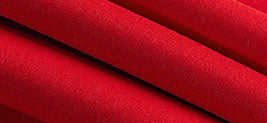
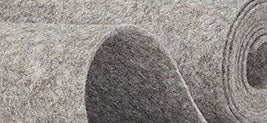

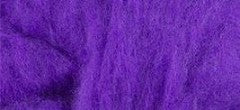
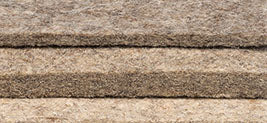
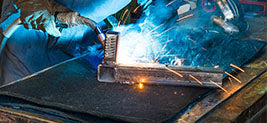
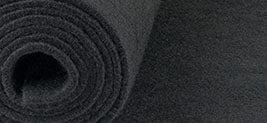
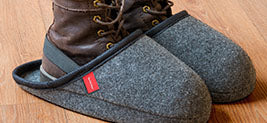
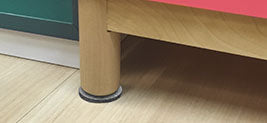
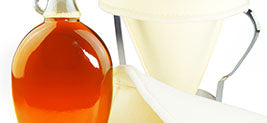
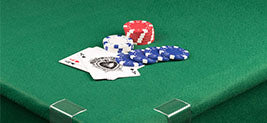
Great tutorial! Those lovely wet felted pieces can also be eco printed, as shown on another blog post: https://thefeltstore.com/blogs/news/eco-printing-on-wool-felt-with-chris-bentley-of-island-studios
Leave a comment